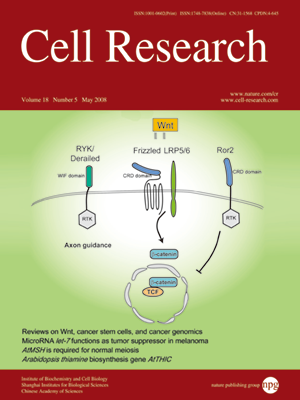
Volume 18, No 5, May 2008
ISSN: 1001-0602
EISSN: 1748-7838 2018
impact factor 17.848*
(Clarivate Analytics, 2019)
Volume 18 Issue 5, May 2008: 538-548
REVIEWS
Genomic analysis of epithelial ovarian cancer
John Farley1, Laurent L Ozbun2 and Michael J Birrer2
1Department of Obstetrics and Gynecology, Uniformed Services University of the Health Sciences, 4301 Jones Bridge Road, Bethesda, MD 20814, USA
2Center for Cancer Research, National Cancer Institute, 37 Convent Drive, Bldg 37, Room 1130, Bethesda, MD 20892, USA
Correspondence: Michael J Birrer(birrerm@mail.nih.gov )
Ovarian cancer is a major health problem for women in the United States. Despite evidence of considerable heterogeneity, most cases of ovarian cancer are treated in a similar fashion. The molecular basis for the clinicopathologic characteristics of these tumors remains poorly defined. Whole genome expression profiling is a genomic tool, which can identify dysregulated genes and uncover unique sub-classes of tumors. The application of this technology to ovarian cancer has provided a solid molecular basis for differences in histology and grade of ovarian tumors. Differentially expressed genes identified pathways implicated in cell proliferation, invasion, motility, chromosomal instability, and gene silencing and provided new insights into the origin and potential treatment of these cancers. The added knowledge provided by global gene expression profiling should allow for a more rational treatment of ovarian cancers. These techniques are leading to a paradigm shift from empirical treatment to an individually tailored approach. This review summarizes the new genomic data on epithelial ovarian cancers of different histology and grade and the impact it will have on our understanding and treatment of this disease.
Cell Research (2008) 18:538-548. doi: 10.1038/cr.2008.52; published online 22 April 2008
FULL TEXT | PDF
Browse 2108


